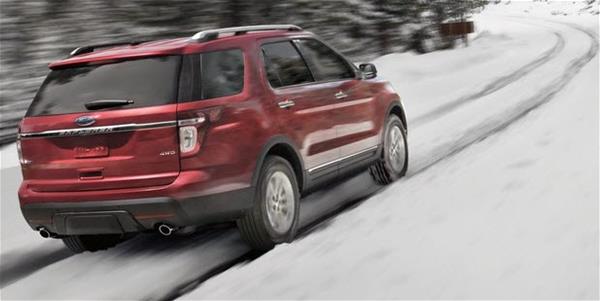Keeping your car warm and driving safe in the winter
Dec 08, 2014
Everyone knows you need to give yourself an extra five minutes in the winter to warm your car up before you start driving. Or do you?
According to Natural Resources Canada that’s a myth, and the best way to get your car warmed up is simply by driving.
The same as in spring and summer months, idling your car drains fuel and generates greenhouse gas emissions that contribute to climate change – so after you’ve cleared the snow and frost from your vehicle, there’s really no reason to stay put.
That being said, it’s important to make sure that when temperatures do drop into the really cold zone, that is below -20C, that you’re plugging into an engine block heater overnight to give your car the extra help it needs to get going in the morning. Plugging in will help your engine reach it’s proper operating temperature and prevent damage, or worse – the dreaded vr – vr – vr umph of a car that won’t start.
 Adapting your car to the cold temperatures
Adapting your car to the cold temperatures
Getting your car started and ready to go in the middle of a Winnipeg winter may feel like a success, but to really conquer the winter roads, you should make sure your car is ready.
Tires are important, especially when the roads are icy. Winter tires have better traction and have deeper grooves to help grip the road more effectively. But no matter what kind of tires you have, you need to check their pressure, wear, age, and alignment to keep you safe in unfavourable conditions.
You also want to double-check your battery and cooling system to ensure your car doesn’t end up on the side of the road from power drainage or overheating.
As a backup, it’s a good idea to keep a winter safety package in your trunk with a warm blanket, and finger and toe warmers while you wait for a tow truck or a friend to pick you up.
Driving safe and smart on icy roads
Actually driving in winter is a challenge too. You often hear people complain that winter comes and people forget how to drive – but it’s more that people do not always adapt to the conditions.
You want to go slow and steady, and read the grooves in the road. Just because the speed limit listed says 50 or 60 kilometres an hour, does not mean you should be going that fast. If the roads are icy and the grooves are big, slow down so you’re not slipping and skidding into a snow bank or the car in front of you.
For more tips on keeping your car warm and prepared for winter visit:
http://www.nrcan.gc.ca/energy/efficiency/communities-infrastructure/transportation/idling/4423